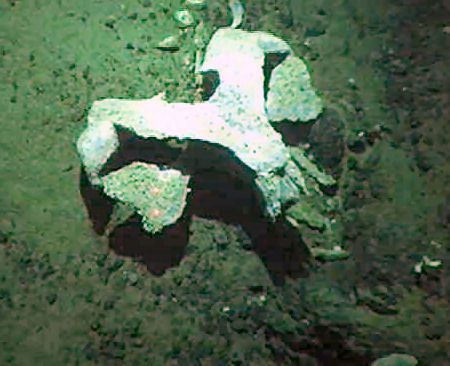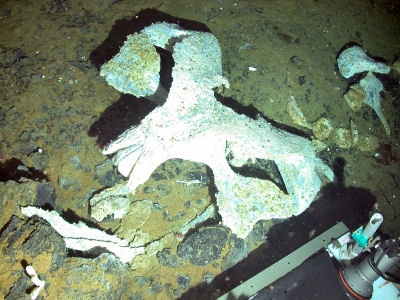Thursday 10th February
Today's contributor: Jon Copley
Overnight and throughout most of the day, we completed an epic 20-hour SHRIMP dive in the crater.
Our dive began by repeating a 2 km survey line that we followed with SHRIMP in 2009, to see whether patterns of marine life in the crater have changed. We then reconnoitred the vent field that we found with the Isis ROV last year, and explored a new area to the south. Finally, we surveyed the main vent field in detail with SHRIMP, looking for areas where we might be able to collect sediment cores with the megacorer.
During the dive, we also visited experiments that we placed on the seafloor last year, to check that they are still intact. In addition, we returned the whale skeleton that we found here last year, and our observations this year should allow us to measure any erosion of the bones.

Whale skull 2011

Whale skull 2010
Unlike an ROV, the SHRIMP camera system does not have thrusters, so we cannot drive it around on the seafloor. Instead, it swings beneath the ship on a cable, and only goes where the ship tows it. Being able to swing SHRIMP over such small targets as a whale skull 1400 metres beneath us was more than we had hoped to achieve.
